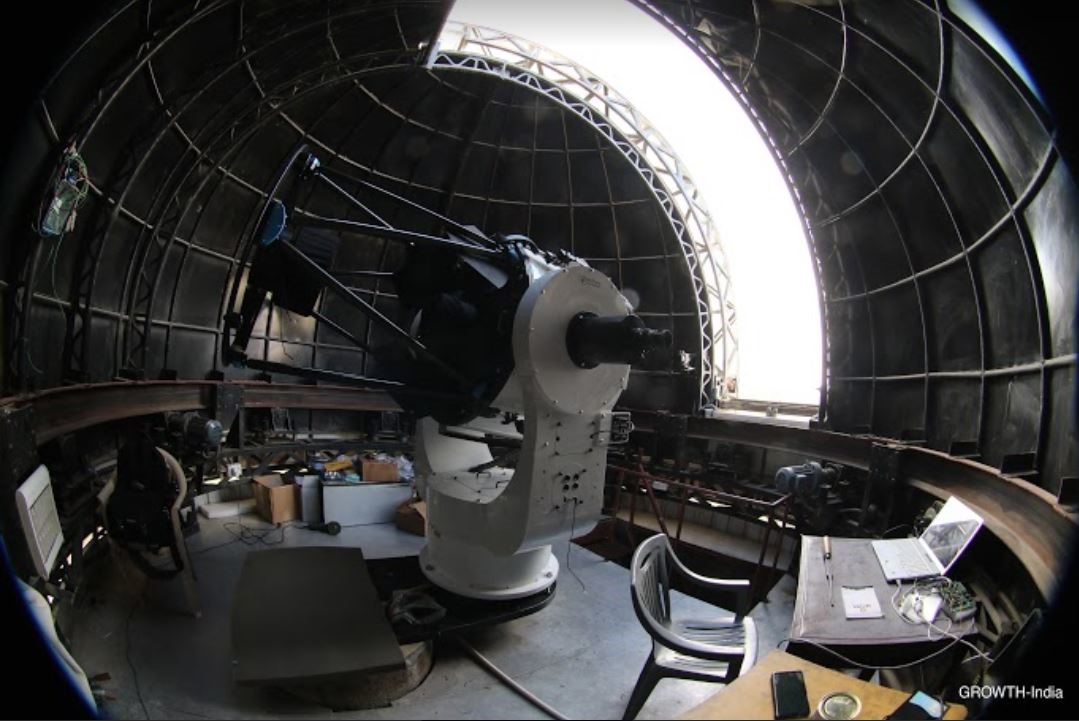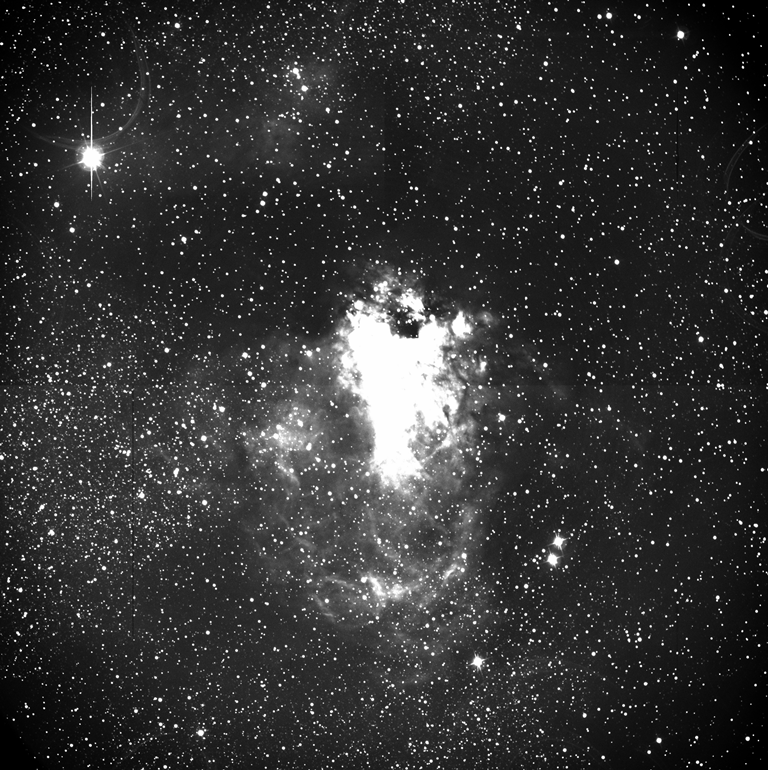
India’s First Robotic Telescope Opens Its Eyes to the Universe
- News
- 3.4K
India’s newest telescope has started observing the skies. The telescope located at the Indian Astronomical Observatory (IAO) at Hanle in Ladakh is the country’s first robotic telescope and the first one designed to observe dynamic or transient events in the universe.

Omega Nebula captured by GROWTH-India telescope at Hanle in Ladakh (Credit GROWTH-India)
“The telescope saw its first light on the night of June 12,” G C Anupama, in-charge of IAO and the Centre for Research and Education in Science and Technology (CREST) at Indian Institute of Astrophysics (IIA) Bengaluru, told India Science Wire.
Young astronomers who were in Hanle are excited over the development. “For the first light, targets were chosen from the Messier catalog – a catalog of nearby, bright astronomical sources accessible from the northern hemisphere. These chosen regions are not only rich in stars, thereby allowing for various image quality tests but are also visually stunning,” recalled Atharva Patil, a project student, and Shubham Srivastav, a postdoctoral fellow – both from Indian Institute of Technology Bombay– while speaking to India Science Wire. Both were involved with the installation of the telescope.
Called GROWTH-India, the facility at Hanle is part of a multi-country collaborative initiative known as ‘Global Relay of Observatories Watching Transients Happen’ (GROWTH) to observe transient events in the universe. The fully robotic optical research telescope is designed to capture cosmic events occurring in timescales much shorter than light years – years, days and even hours.
Universities and research institutes from the US, the UK, Japan, India, Germany, Taiwan, and Israel are part of the initiative. The primary research objective of the project is time-domain astronomy, which entails the study of explosive transients and variable sources in the universe.
“Together with partner telescopes strategically located around the world, we can continuously monitor any interesting object in the sky – uninterrupted by daylight,” explained Anupama.
The Rs 3.5 crore telescope is a joint project of the Bengaluru-based Indian Institute of Astrophysics (IIA) and the Indian Institute of Technology Bombay (IITB). The project is fully funded by the Science and Engineering Research Board (SERB) of the Department of Science and Technology (DST) under the PIRE project, administered by Indo US Science and Technology Forum. Anupama of IIA and Varun Bhalerao of IIT Bombay are the principal investigators of the project in India.
The 70 cm robotic telescope joins other larger facilities at IAO in Hanle – the Himalayan Chandra Telescope, the gamma-ray array telescope (HAGAR), and the imaging Cherenkov telescope (MACE). The telescope is expected to generate enormous amounts of data – over one thousand gigabytes in a year.
The telescope has a sensitive camera capable of detecting even the faintest transients found by partner survey telescopes such as the Zwicky Transient Facility at Palomar, California. It is also is programmed to directly communicate with different ground-based and space-based surveys searching for transient sources.
Transients often leave signatures in various electromagnetic wavelength bands, which astronomers try to capture using telescopes that are sensitive to a variety of wavelengths – from gamma-rays to infra-red. Transient surveys involve scanning a part of the sky, moving on to other areas, returning to the first part repeatedly and comparing images to see changes such as increase or decrease in brightness of a source. Telescopes dedicated for transient surveys are usually small, wide-field instruments.
“Our primary science goals are studying electromagnetic counterparts to gravitational wave sources, young supernovae and near earth asteroids,” Anupama added. (India Science Wire)
By Dinesh C Sharma
For the latest Science, Tech news and conversations, follow Research Stash on Twitter, Facebook, and subscribe to our YouTube channel


